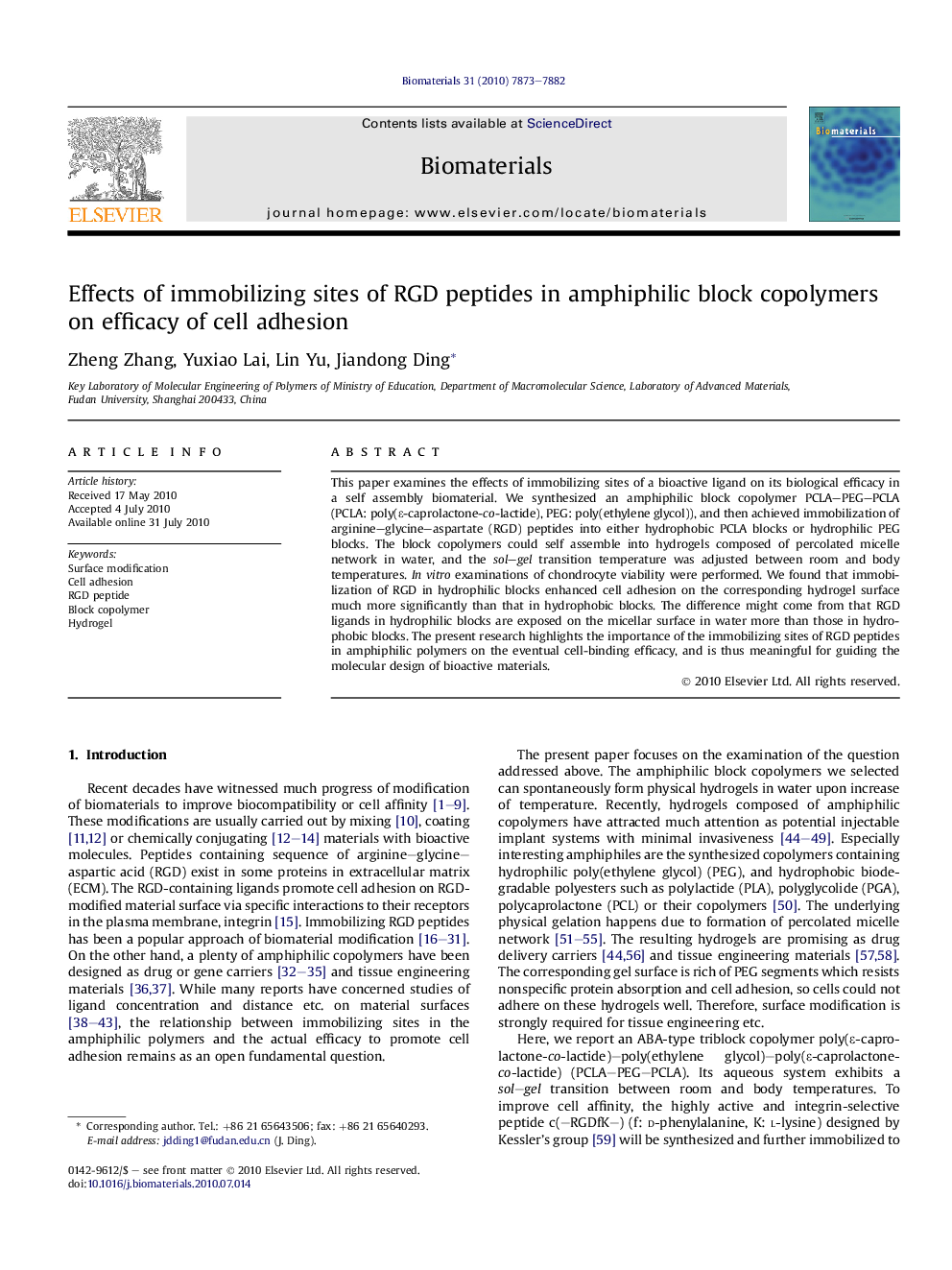| Article ID | Journal | Published Year | Pages | File Type |
|---|---|---|---|---|
| 8045 | Biomaterials | 2010 | 10 Pages |
This paper examines the effects of immobilizing sites of a bioactive ligand on its biological efficacy in a self assembly biomaterial. We synthesized an amphiphilic block copolymer PCLA–PEG–PCLA (PCLA: poly(ɛ-caprolactone-co-lactide), PEG: poly(ethylene glycol)), and then achieved immobilization of arginine–glycine–aspartate (RGD) peptides into either hydrophobic PCLA blocks or hydrophilic PEG blocks. The block copolymers could self assemble into hydrogels composed of percolated micelle network in water, and the sol–gel transition temperature was adjusted between room and body temperatures. In vitro examinations of chondrocyte viability were performed. We found that immobilization of RGD in hydrophilic blocks enhanced cell adhesion on the corresponding hydrogel surface much more significantly than that in hydrophobic blocks. The difference might come from that RGD ligands in hydrophilic blocks are exposed on the micellar surface in water more than those in hydrophobic blocks. The present research highlights the importance of the immobilizing sites of RGD peptides in amphiphilic polymers on the eventual cell-binding efficacy, and is thus meaningful for guiding the molecular design of bioactive materials.
